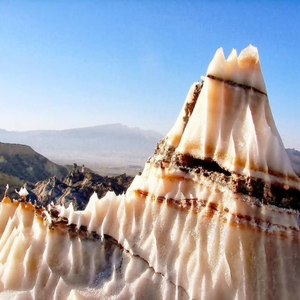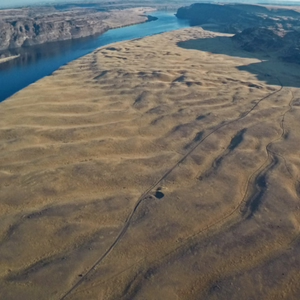
Mike Hudec on Salt Tectonics
05/11/25 • 24 min
Most of Earth’s salt is dissolved in the oceans. But there is also a significant amount of solid salt among continental rocks. And because of their mechanical properties, salt formations can have a dramatic effect on the structure and evolution of the rocks that surround them. This gives rise to what we call salt tectonics – at first sight, a rather surprising juxtaposition of a soft, powdery substance with a word that connotes the larger scale structure of the crust.
In the podcast, Mike Hudec explains the origin of salt in the Earth’s crust and describes the structures it forms when subjected to stresses. He also discusses how salt can play in important role in the formation of oil and gas reservoirs.
Hudec is a research professor at the Bureau of Economic Geology at the University of Texas at Austin.
Most of Earth’s salt is dissolved in the oceans. But there is also a significant amount of solid salt among continental rocks. And because of their mechanical properties, salt formations can have a dramatic effect on the structure and evolution of the rocks that surround them. This gives rise to what we call salt tectonics – at first sight, a rather surprising juxtaposition of a soft, powdery substance with a word that connotes the larger scale structure of the crust.
In the podcast, Mike Hudec explains the origin of salt in the Earth’s crust and describes the structures it forms when subjected to stresses. He also discusses how salt can play in important role in the formation of oil and gas reservoirs.
Hudec is a research professor at the Bureau of Economic Geology at the University of Texas at Austin.
Previous Episode

Vic Baker on Megafloods
Megafloods are cataclysmic floods that are qualitatively different from weather-related floods. In the podcast, Vic Baker explains our ideas as to what causes megafloods and describes the striking evidence for such floods in the Channeled Scablands of Washington State and in the Mediterranean.Vic Baker has been studying megafloods for over 50 years. He is a Professor of Hydrology and Atmospheric Sciences, Geosciences, and Planetary Sciences at the University of Arizona.
If you like this episode you’ll love
Episode Comments
Generate a badge
Get a badge for your website that links back to this episode
<a href="https://goodpods.com/podcasts/geology-bites-398059/mike-hudec-on-salt-tectonics-90998288"> <img src="https://storage.googleapis.com/goodpods-images-bucket/badges/generic-badge-1.svg" alt="listen to mike hudec on salt tectonics on goodpods" style="width: 225px" /> </a>
Copy




